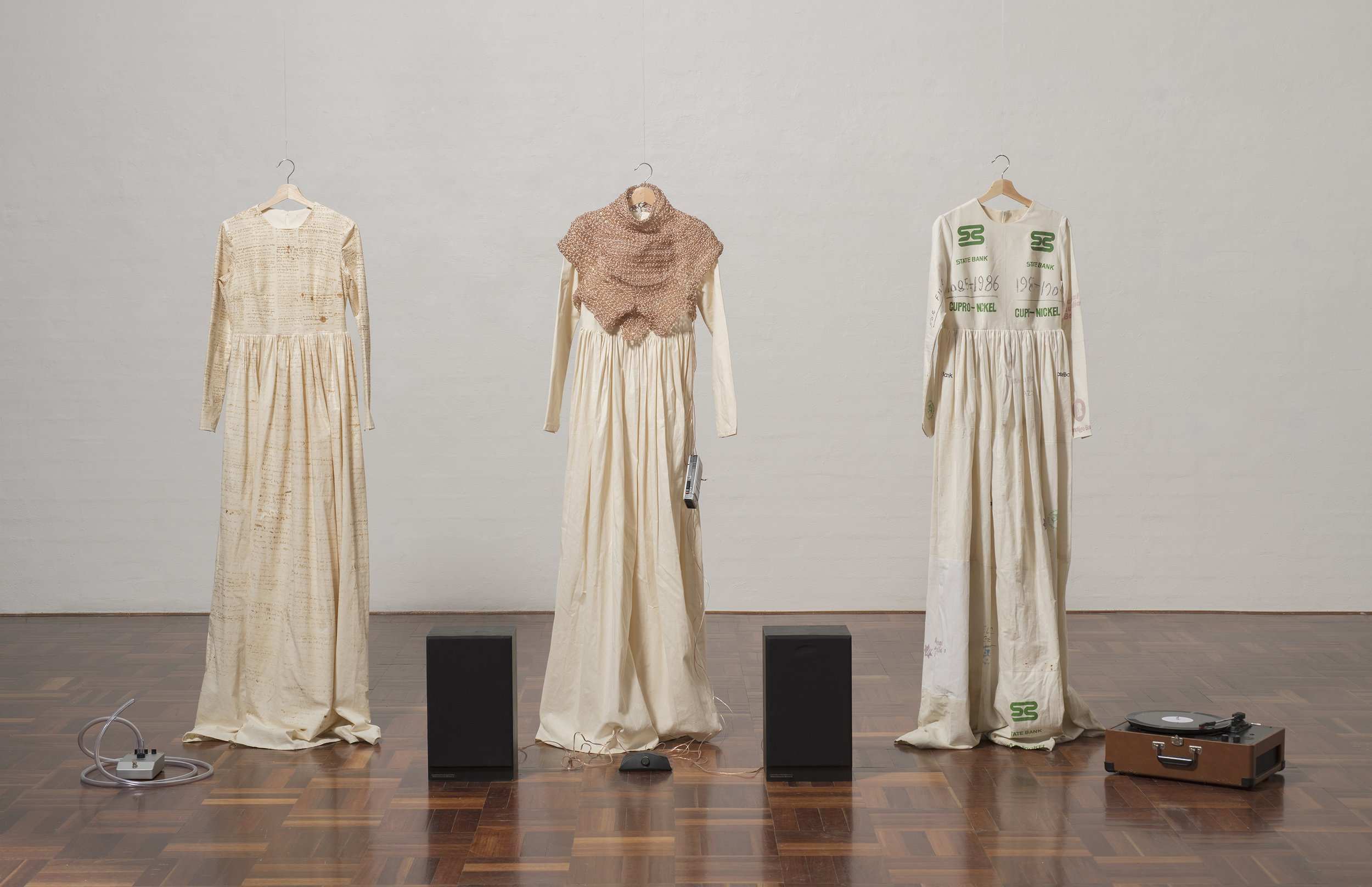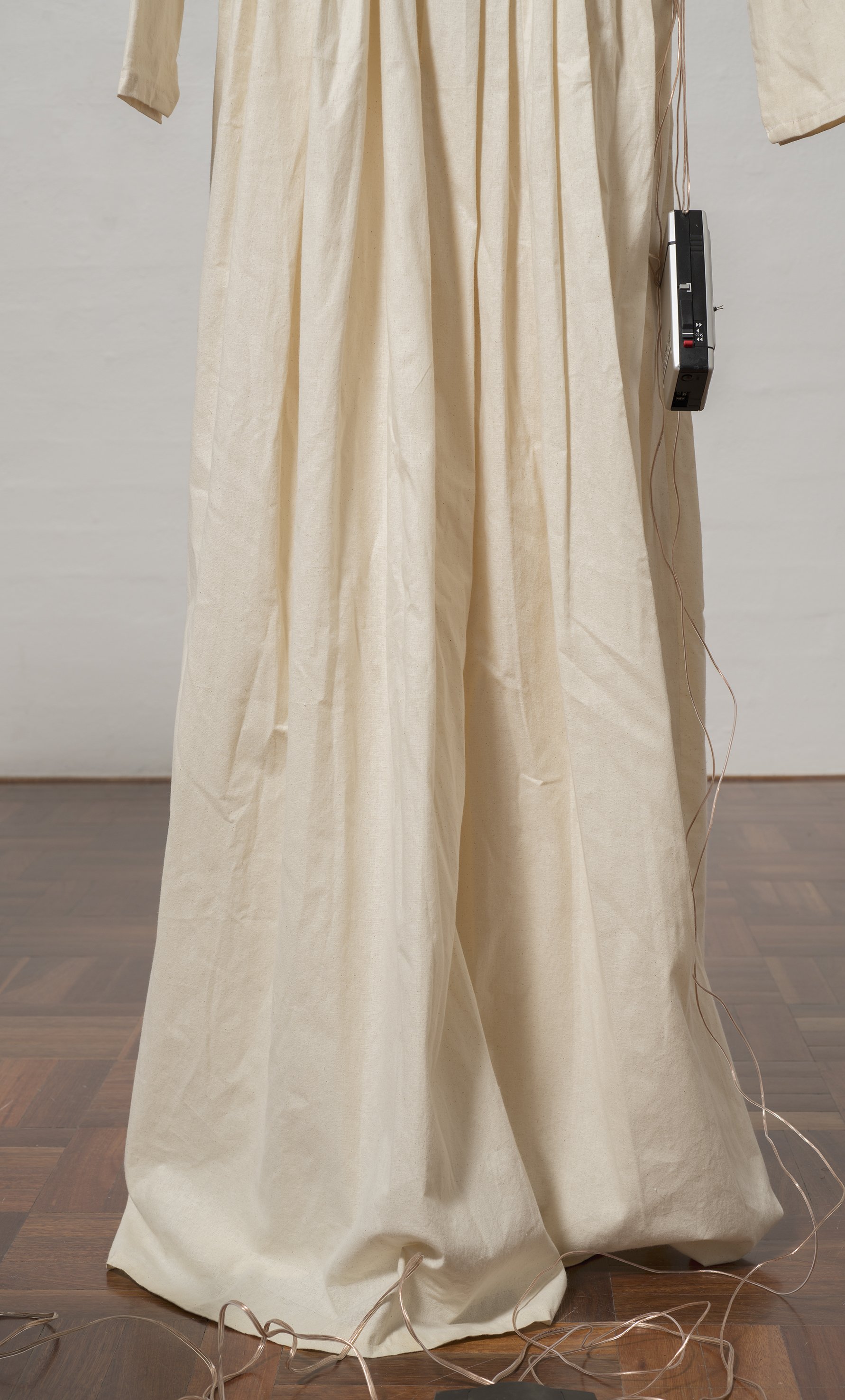Arresting the Echo: Acknowledging Loss in the Disembodied Present
Over the past two years, many people have become isolated from the rituals that help them navigate their lives. Restrictions on coming together have meant that communities, families, and individuals are not able to perform and acknowledge change effectively. To me, this large-scale stagnation represents a general disassociation from our bodies and disregard for the role our bodies play in exercising empathy and care in troubling times. My antidote to this disembodiment has been to consider the voice as a material that both broadcasts the individual body and can overcome spatial restrictions by being amplified and recorded. This project, Arresting the Echo, questions what capacity the voice has to take on the work of embodying loss and what the gendered implications of using your voice and performing mourning are.
watch the Arresting the Echo performance suite Below
In Arresting the Echo, I have researched these concerns by developing artistic strategies that address the political nuances of the voice and ask myself and my audience to stay with loss. I worked with reproduction apparatuses that record and reposition the voice as a political tool that can be used to enact dismissed rituals. I began to build the idea of a sound recording as a perpetual echo. I imagined the recording mechanically arresting the listener and the recorded speaker in a moment of time without letting them move forward. I was motivated to research this topic after necessary COVID-19 interstate travel restrictions repeatedly delayed my family’s ability to collectively care for and mourn the passing of my grandmother. Shortly before she passed, my grandmother lost the use of her voice. At first, I had imagined unperformed mourning as being claustrophobic, a recorded sound repeating and unable to fade out. However, I eventually shed the feeling of being trapped and decided to reframe active engagement with the echoing voice of the deceased as willfully staying with loss.
Arresting the Echo (installation view), calico, cash bags, lemon juice, cotton, speaker wire, dictation machine, talk box, speakers, amplifier, custom vinyl record, record player, 2021. Photo: Brenton McGeachie 2021.
The project culminated in three performances that use Empathy Apparatuses to extend my capacity to approach and make space for incomprehensibility. Across the performances, I use an excerpt of my grandmother’s speech to approach loss and incomprehensibility. Each performance uses a recording system to help me embody my grandmother’s voice, amplify and repeat it and then, finally, respond to it. Each tool is characterised by contradictions, allowing me to control how I stay with loss by forcing me to address the loss. Although the research was motivated by the loss of my grandmother, this body of work ultimately addresses loss as more than the death of a family member. Instead, it considers how we learn to sit with loss during the cultural turn towards disembodiment and within the Anthropocene, which views our current epoch as one deeply implicated in oscillating extremes of social change and extinction events.


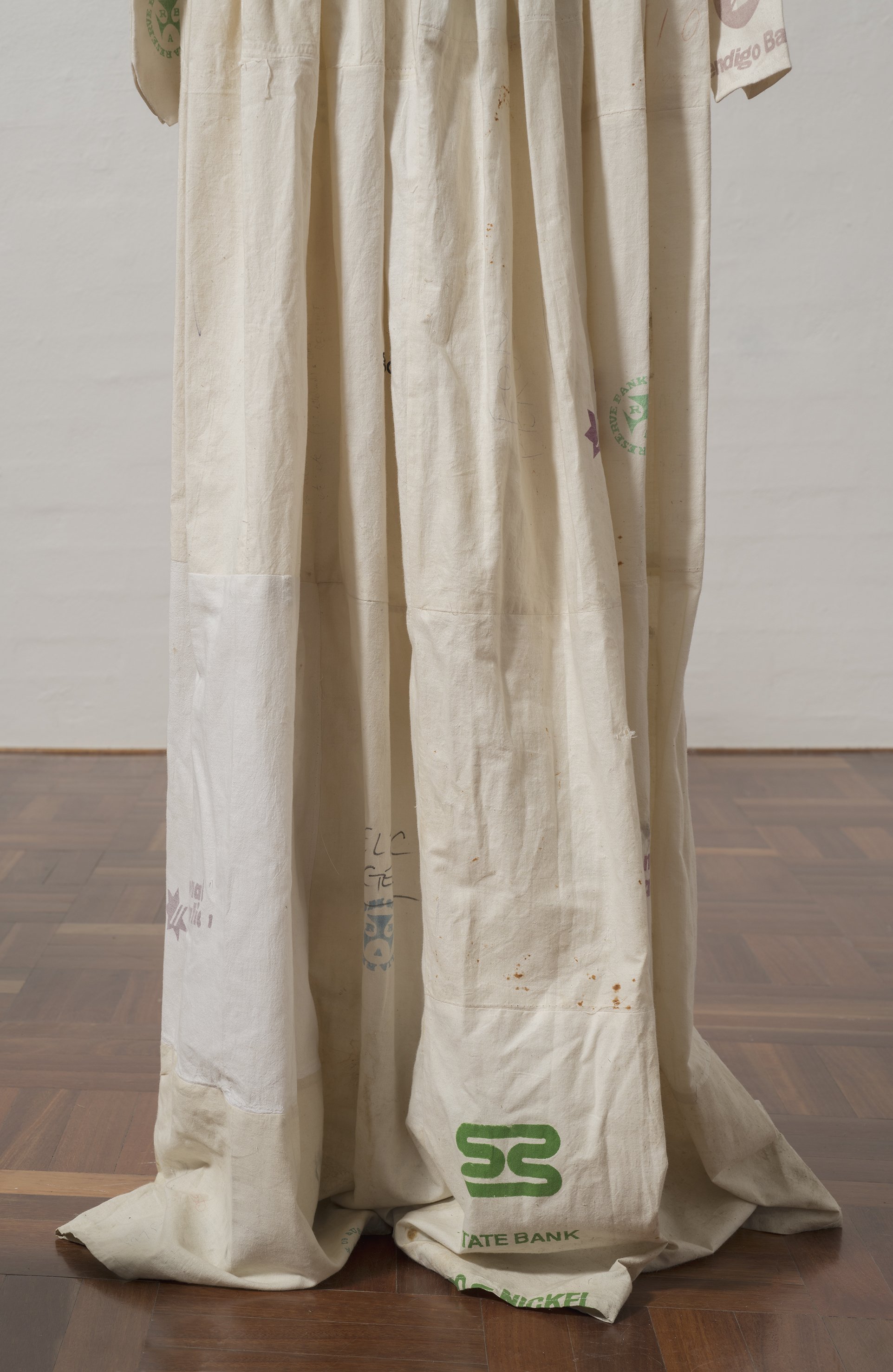

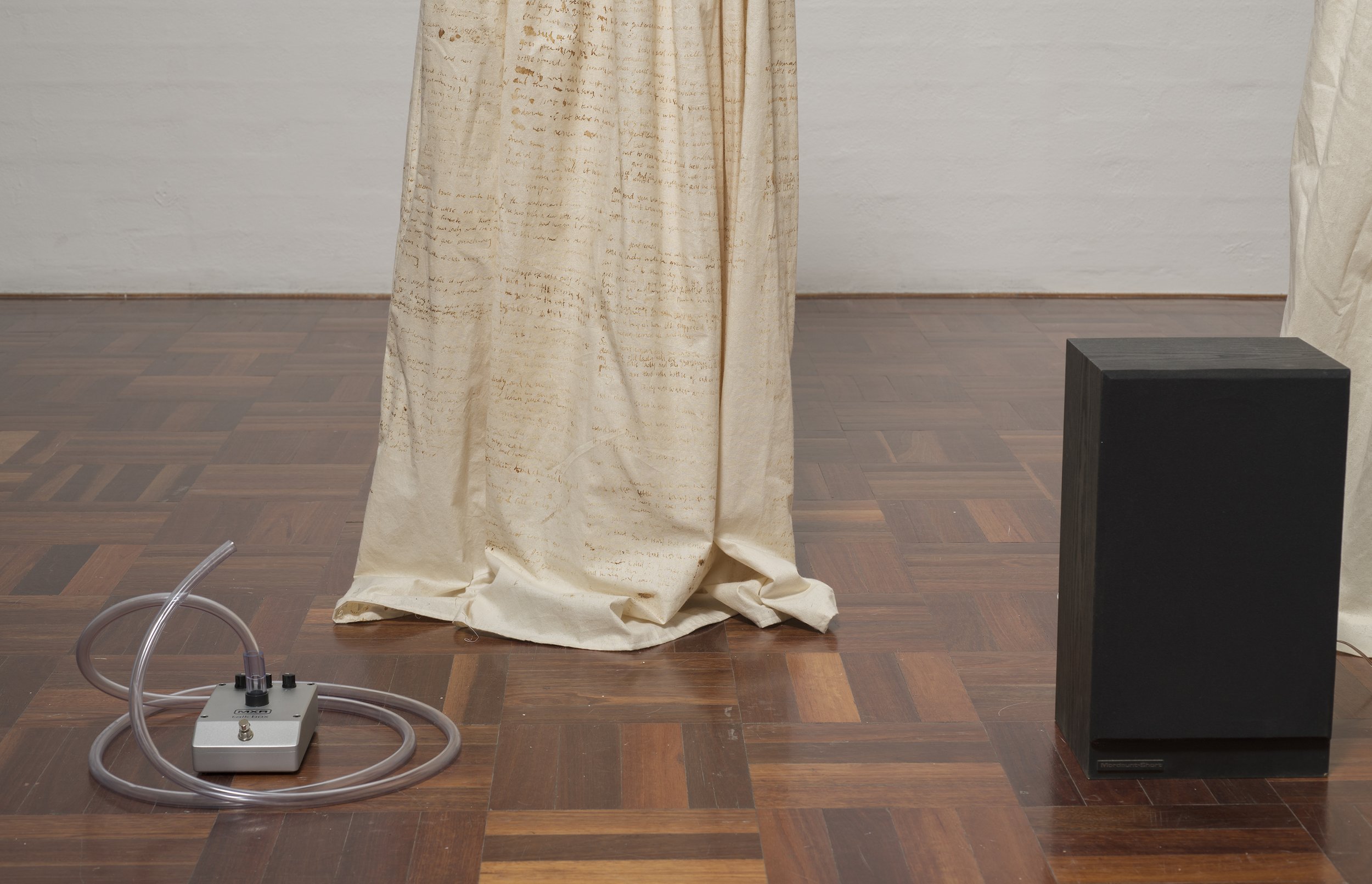
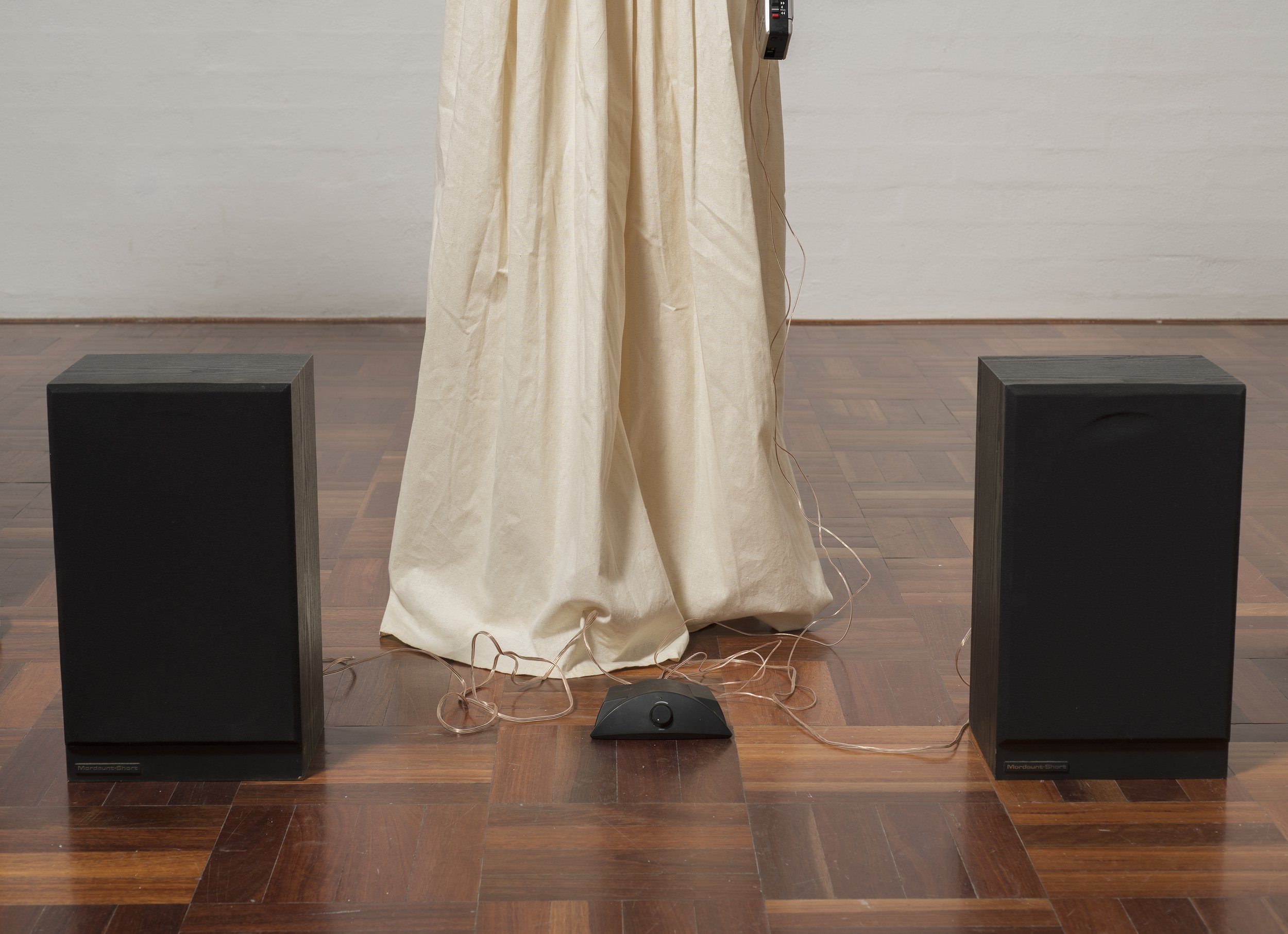
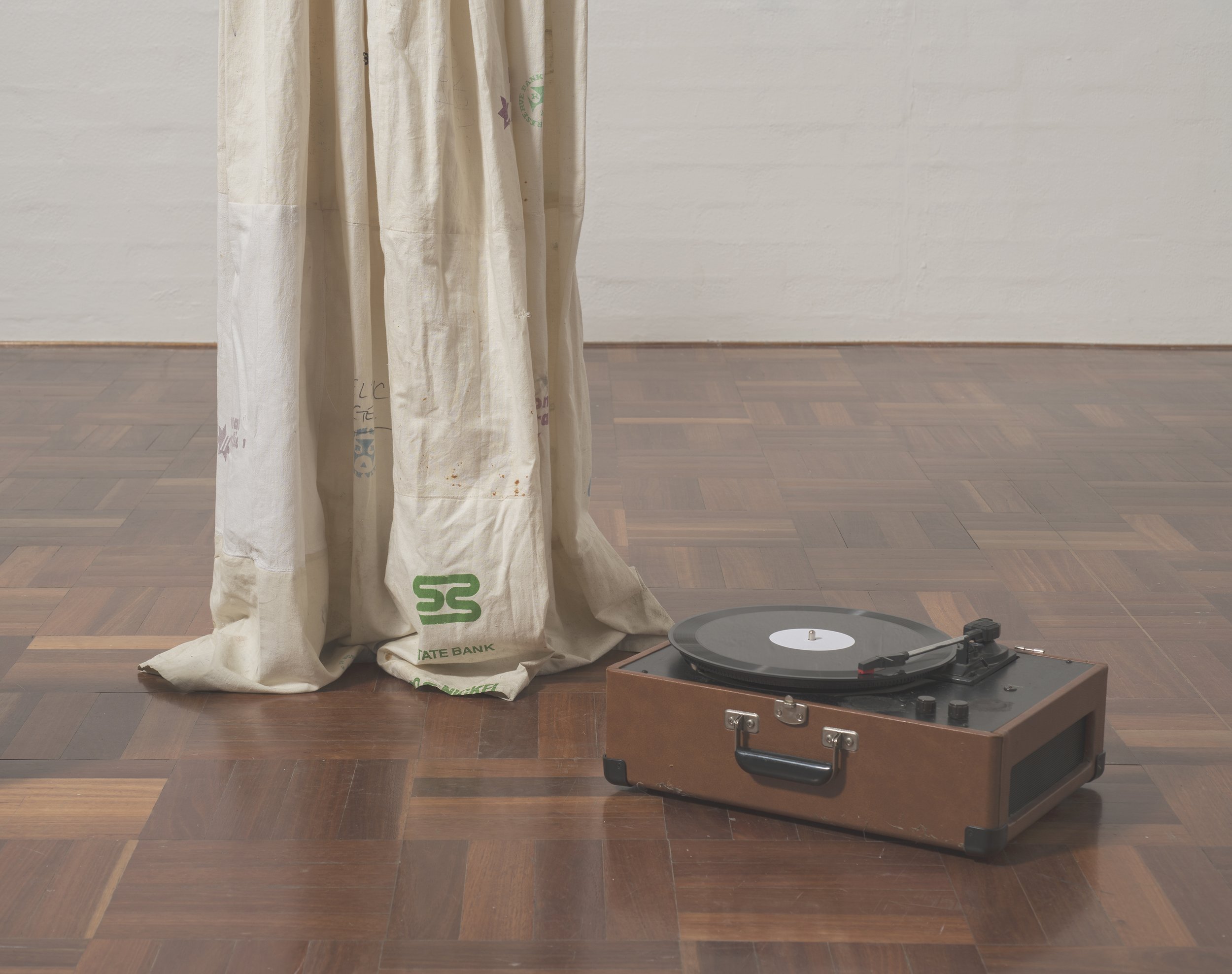
Development and Further Information
You can navigate through the project’s development by following the links at the bottom of the page or by clicking on each work title or video still to see details, prototypical work and supporting documentation.
If you’re ever moved to while viewing this project, you can donate directly to Motor Neurone Disease Research Australia.
